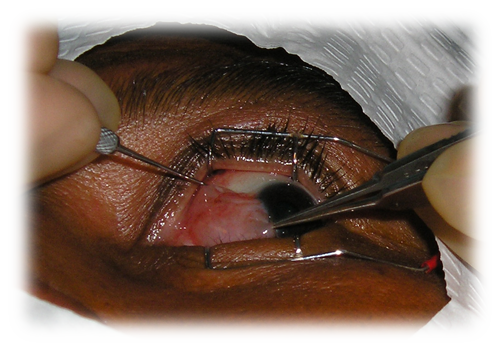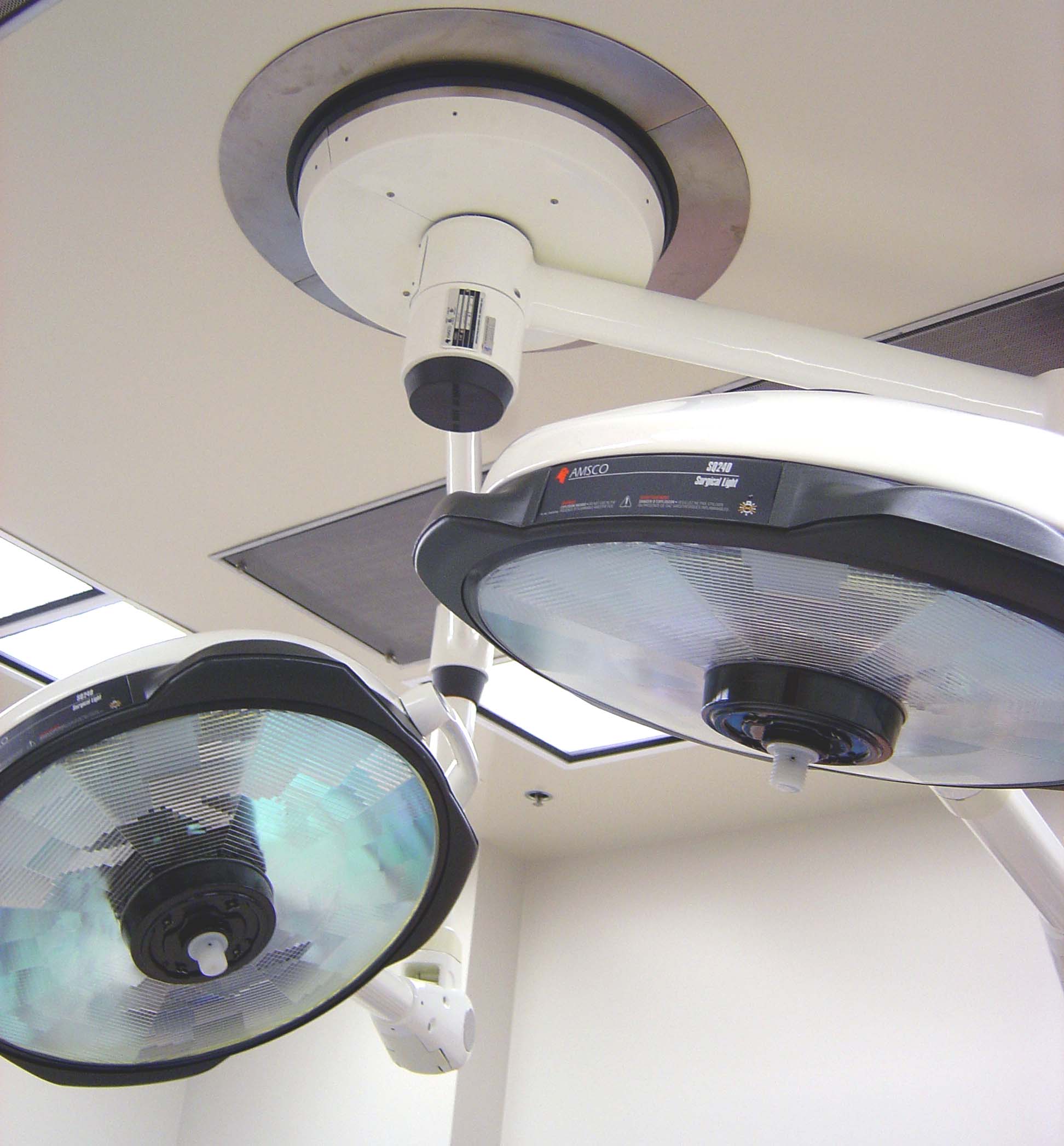Eye Surgery
Dr Wong performs specialised strabismus surgery in addition to common surgical procedures such as cataracts, chalazion, pterygium and blocked tear ducts.
Dr Wong is a specialist in strabismus or squint surgery, as well as a general ophthalmologist for both adult and paediatric patients. Dr Wong performs specialised strabismus surgery in additon to general eye surgery procedures such as cataracts, chalazion, pterygium and blocked tear ducts.
It’s important to understand that it is the patient who makes the final decision whether eye surgery is the appropriate treatment. It is the doctor’s responsibility to educate patients and give them the knowledge they need to make an independent and well-informed decision regarding treatment.
If eye surgery is the chosen treatment, it is also important to understand that, as with any form of treatment, there are inherent risks of complication and the degree of success can vary – every case is unique. The risk to you and your vision varies according to your general health and other factors. The ophthalmologist needs to know the patient’s full medical history to plan the best treatment. Some may interfere with treatment, surgery, anaesthesia, recovery and treatment following recovery. This is why it is important that you consult an experienced specialist such as Doctor Wong to determine what treatment is appropriate and what type of results you can expect.
Will I need to remain overnight in hospital?
Strabismus surgery is typically an outpatient procedure and does not require an overnight hospital stay.
How much will it cost?
The costs vary according to what is performed during the appointment. If you require more detail, please contact the clinic – see “contacts”.
Is there a Medicare rebate?
Again, this depends on what procedures, if any, are performed. For more detail, please contact the clinic – see contacts in the menu bar. Again, please note that in order to claim a rebate from Medicare you will need to visit your GP or optometrist for a referral.
Payment Types?
All clinics accept cash, cheque or credit (Bankcard, Visa or Mastercard). Please note that you will be required to settle your account after the consultation.

Generally, squint treatment requires specialised eye muscle surgery, though there are cases where medication, vision therapy or vision aids are used.
Squint surgery in adults provides improved depth perception or binocular vision, improved visual fields, eliminating or minimizing double vision and has been shown to improve social function. It is not a purely cosmetic procedure, although it restores normal appearance and is considered reconstructive.
For children with certain types squint, early surgery may be recommended to improve the chance of restoring or promoting normal binocular vision.
The surgery involves involves adjusting these muscles through shortening and re-attaching to re-align the eyes. The muscles be may weakened, strengthened or moved and then fixed with a permanent knot.
For adults it may be possible to fix the muscles with an adjustable suture – instead of a permanent knot, a temporary knot is used. This allows the surgeon to reassess the alignment of the eyes and re-adjust if necessary before fixing with a permanent knot. This method allows fine tuning of the alignment and reduces the chances of an over-correction or under-correction. The re-adjustment typically takes place the after the surgery and the patient remains awake during the re-adjustment.
After surgery, it takes a while for the eye to “settle” and indeed it may not be perfect after one operation. It is not uncommon for further operations to be required for fine tuning, this is especially true for paediatric squints.
Do I need squint surgery?
The goal of squint surgery is to improve the alignment of the eyes which can be for a number of reasons:
- to improved appearance
- to improve peripheral vision
- to improve depth perception
- to resolve double vision
There are alternative treatments available including medication, vision therapy or vision aids. Each case of strabismus is unique and should be discussed with your ophthalmologist to understand the treatment options available.
What are the risks of squint surgery?
Strabismus surgery is safe and effective, but as with any surgical procedure, there are risks of complications. These risks should be discussed with your ophthalmologist.
The chance of any serious complication from strabismus surgery that could affect the sight or well-being of the eye is exceedingly rare. However, there are risks with any surgery, including:
- Sore eyes;
- Redness;
- Residual misalignment;
- Double vision;
- Infection;
- Bleeding;
- Corneal abrasion;
- Decreased vision;
- Retinal detachment;
- Anesthesia-related complications.
How successful is strabismus surgery?
Strabismus surgery is a common procedure and most patients will see a significant improvement in the alignment of their eyes after surgery. However, each case of strabismus is unique and should be discussed with your ophthalmologist to understand the goals and expectations of surgery.
Is squint surgery performed under local or general anaesthetic?
Squint surgery for children requires general anesthesia. Children may be provided a sedative pre-surgery.
For adults, the surgery may be performed under general or local anesthesia. Irrespective, it is important that the patient fast for about eight hours before the procedure.
How long does squint surgery take?
Most squint surgeries are completed with one to two hours depending on the difficulty of the case.
The patient will need to remain at the surgical center for several hours including pre-operative and post-operative care.
Is the eye removed during squint surgery?
No. The eye is never removed to perform strabismus surgery and neither is the eyeball cut open. Only a small opening is made in the conjunctiva (the membrane on the surface of the eye) to access the muscle.
Will I need to remain overnight in hospital?
Strabismus surgery is typically an outpatient procedure and does not require an overnight hospital stay.
How much will it cost?
The costs vary according to what is performed during the appointment. If you require more detail, please contact the clinic – see “contacts”.
Is there a Medicare rebate?
Again, this depends on what procedures, if any, are performed. For more detail, please contact the clinic – see contacts in the menu bar. Again, please note that in order to claim a rebate from Medicare you will need to visit your GP or optometrist for a referral.

Cataract surgery is a commonly performed and generally safe surgical procedure. For most people, the benefits in terms of improved vision are greater than any disadvantages.
Modern, small-incision phacoemulsification techniques have now become the standard for cataract surgery. In this procedure, a small incision is made in the front surface of the eye and then a circular hole is cut in the front of the thin membrane (anterior capsule) that encloses the eye’s natural lens. A special instrument is inserted to break up and remove the diseased lens. Once the entire lens is removed, an artificial lens called an intraocular lens (IOL) is inserted through the incision and placed into the empty capsule. Usually, the eye heals quickly after surgery and no stitches are required.
This minimally invasive and relatively simple operation can be performed under local anesthesia and typically takes approximately 30 minutes. The operation has a success rate of over 98% with a low complication rate.
Do I need cataract surgery?
Cataract surgery is a common procedure and most patients will see a significant improvement in the alignment of their eyes after surgery.
How successful is cataract surgery?
Cataract surgery is a common procedure and most patients will see a significant improvement in the alignment of their eyes after surgery. However, each case of strabismus is unique and should be discussed with your ophthalmologist to understand the goals and expectations of surgery.
What are the risks of cataract surgery?
How long does the surgery take?
Most strabismus surgeries are completed with one to two hours depending on the difficulty of the case.
The patient will need to remain at the surgical center for several hours including pre-operative and post-operative care.
I have a cataract, but the doctor wants to delay before removing it. Why?
Cataracts are almost imperceptible to begin with and gradually develop, becoming larger and more opaque. The cataract may not yet impair your vision and your doctor is probably monitoring the cataract until it interferes significantly with your vision and your lifestyle.
How much will it cost?
The cost of cataract surgery varies from one doctor to the next; it also depends on the type of procedure and intraocular lens you and your cataract surgeon decide is best for your needs.
Medicare and most health insurance plans will cover cataract surgery and ordinary intraocular lenses, but not the cost of premium IOLs, such as presbyopia-correcting IOLs that simultaneously correct vision at near, intermediate and distant ranges. These types of lenses can cost as much as $5,000 or more out-of-pocket for both eyes.
Is there a Medicare rebate?
Again, this depends on what procedures, if any, are performed. For more detail, please contact the clinic – see contacts in the menu bar. Again, please note that in order to claim a rebate from Medicare you will need to visit your GP or optometrist for a referral.
